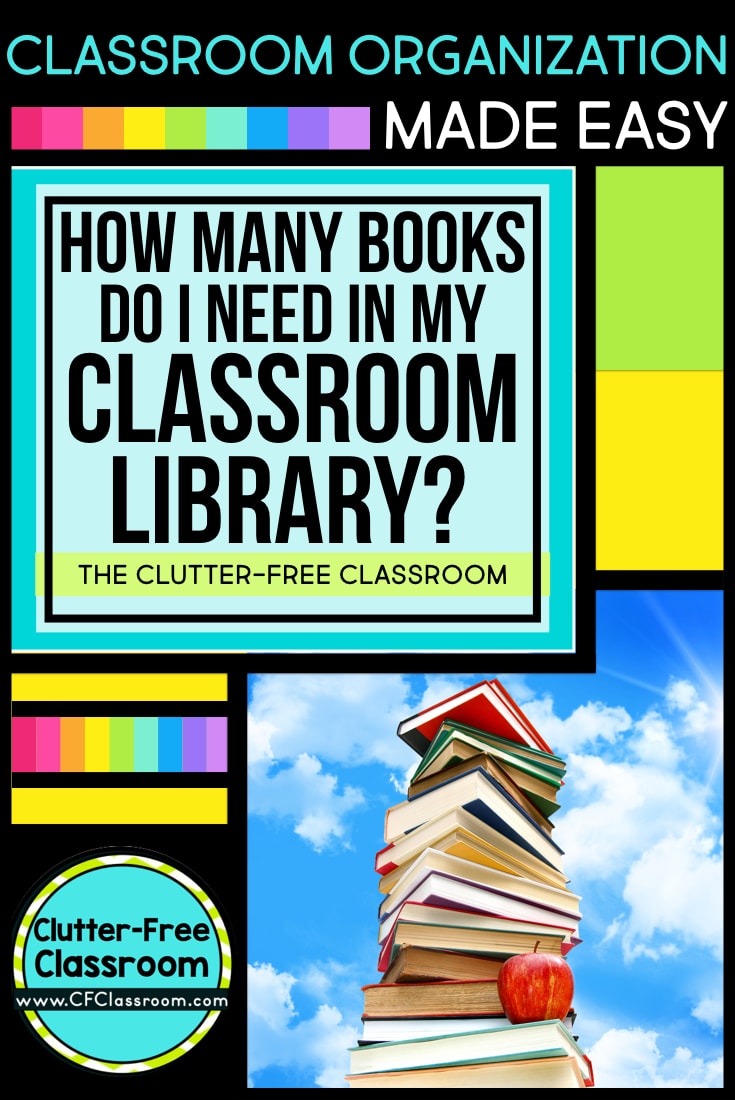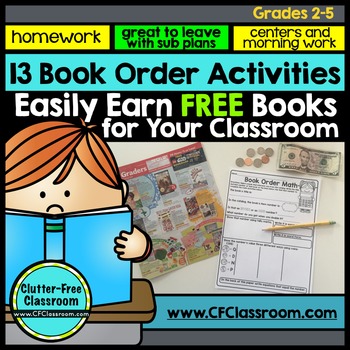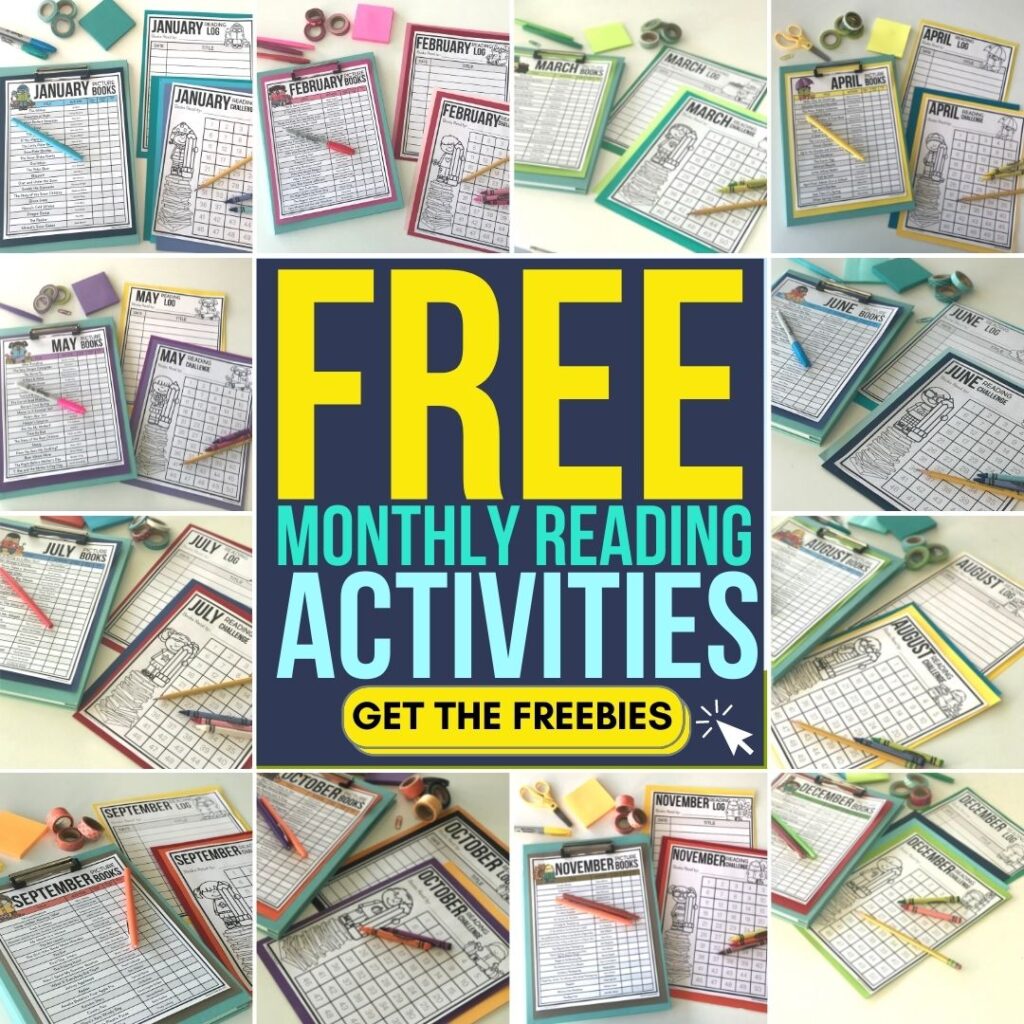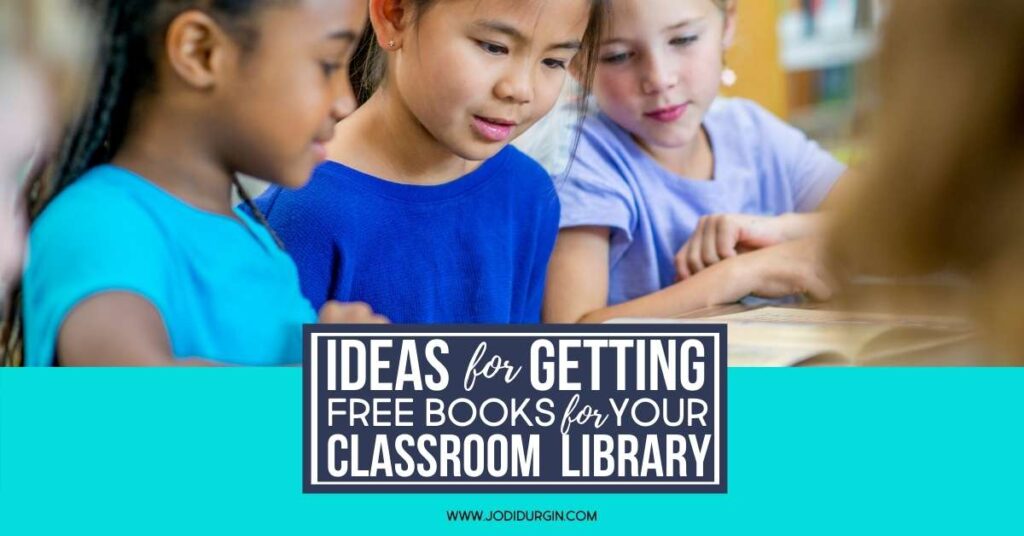
As classroom teachers, we know how important it is to have a fully-stocked classroom library that includes a variety of genres, topics, plot lines, characters, settings, cultures, reading levels, etc. It is important for students to easily access texts that are interesting to them, show characters, plots, and settings that they can connect to themselves and their own lives, and show other cultures and other forms of diversity that they can begin to learn about. The problem is that school budgets rarely provide enough classroom library books and the responsibility falls on the teacher to fill the shelves with books. So, what do we do? We need to get creative and find free and cheap books for our classroom libraries. But. where can teachers get free books? I’ve got you covered! Read below to get some ideas about where to find free books for teachers!
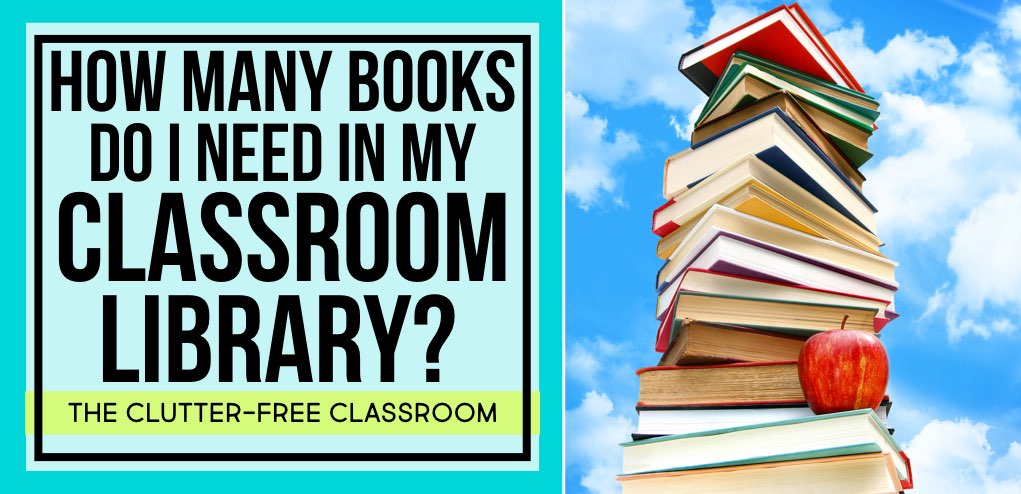
How Many Books Should a Classroom Library Have?
The number of books in a classroom library will vary based on grade level, space, and the subjects and content you teach. Although I have read some research-based articles that recommend an average of 20 books per student, I do not think there can be a set rule. Below are some questions to consider based on your specific situation.
1. What grade level do you teach?
While all classrooms need lots of books, the younger grades can get by with less than older grades. Kindergarten and first grade students are in the “learn to read” phase. They will be participating in a lot of guided reading lessons and phonics-based instruction. Although you will have some advanced readers, overall the spectrum of levels will range from non-readers to about a second grade level at most. Fourth and fifth grade teachers will find that a typical class of students will have struggling readers who are well-below grade level in the same room as students who are reading at a high middle school level. For that reason, upper elementary teachers will find it necessary to have a vast collection of titles within the classroom.
2. How much space do you have in your classroom?
The square footage, quantity and size of your students, and the layout of your classroom will factor into the size of your library. If you have a large area, then by all means jam it with lots and lots of literature. If you are tight on space or if you don’t have adequate storage, then you may need to get creative.
3. What are you responsible for teaching?
If you teach in a departmentalized classroom and are the person in charge of literacy, then you will obviously want to fill the space with as many books as you can possibly squeeze in there. If you are the teacher responsible for math and science, you are not off the hook. While you will not need as many books as your ELA counterpart, you should have a collection of titles that relate to the content areas you teach. If you are a generalist who teaches all subject areas, then you’ll need books at varied reading levels, subject areas, as well as seasonal and thematic titles. In this case, I suggest rotating titles out and dividing your books into smaller classroom libraries. I wrote a recent blog post that will help you in that situation and welcome you to check it out here.
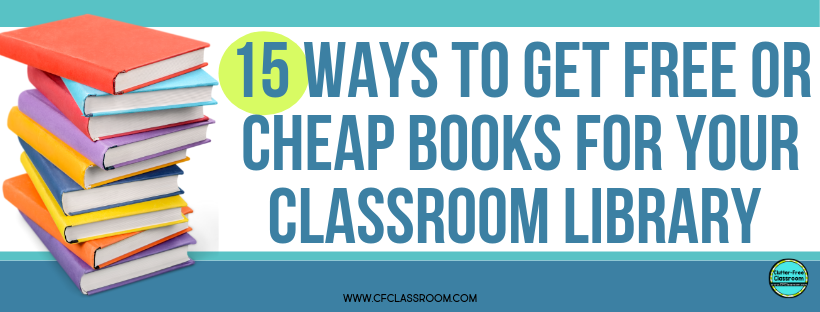
15 Ways to Get Free or Cheap Books for Your Classroom Library
Below are some ways teachers can get free and cheap books.
1. Borrow from Your Local Library
Check out books from your town’s public library. This is a great idea for seasonal books that you need for a short period of time.
2. Borrow from Your School Library and Book Room
Head down the hall to your school library and book room and checkout some books for your classroom.
3. Take Advantage of the Scholastic Reading Program
Make the most of book club order catalogs. Teachers can earn free books by accumulating points when their students order books from those colorful catalogs. They are a great opportunity to acquire new copies of recently published books as well as some classic titles as well. Because of the way the points typically multiply as your order total goes up (i.e. order $50.00 and get 2x the bonus points, order $75.00 and get 3X the bonus points) it is extremely beneficial to optimize your sales.
While you do not want families to overextend their budgets, there are plenty of parents who aren’t ordering books simply because the catalog gets lost in the shuffle of all the papers that come home from school. With today’s busy lifestyles it is not uncommon for the order forms to land in the recycling bin.
You can solve this problem by attaching purposeful learning activities to the forms as homework. I’ve created a set of book order activity pages that greatly increase the amount of bonus points teachers earn. I regularly used them to practice math and writing skills using the book order catalogs. By encouraging the parents to put their eyes on the order form and providing students with an engaging activity that caused them to look beyond the plastic toys and current pop star posters that sometimes appear in the catalog the number of orders increased dramatically and I earned so many free classroom library books as a result.
4. Make a Scholastic Book Fair Wish List
Many schools host a scholastic book fair. At my school, teachers got to put together a wish list bin that parents could buy a book for. If your school has this opportunity, definitely take advantage!
5. Ask for Books from a Retiring Teacher’s Collection
At the end of the school year, check in with teachers who are retiring to see if they have any books they’d like to leave that you can scoop up.
6. Set Up an Amazon Wishlist
Consider setting up an Amazon Wishlist that you share with friends and family so they can purchase books for you to use at school. Check in with your administration to see if you can share it with your students’ families as well. Most books are available on Amazon and are pretty good prices. Take to social media to share your request and ask that even if people aren’t able to donate they help your students by spreading the word and sharing your post.
7. Set Up a Donor’s Choose
Set up a donor’s choose project for your classroom. This is a popular option! Again, take to social media to share your request and ask that even if people aren’t able to donate they help your students by spreading the word and sharing your post.
8. Ask Former Students for Donations
Reach out to your alumni and ask them to keep you in mind when they are cleaning out their rooms and bookshelves at home. Because these books are coming from their home libraries they will typically be recent titles in excellent condition. Be sure to mail a hand-written thank you card to any student who donates.
9. Ask Students’ Families for Donations
As I mentioned earlier, be sure to check in with your administration to see if you can do this. This is another easy way for teachers to get free books for their classroom library!
10. Post in Facebook Groups
If your town or community has a Facebook group, post a request. Many families with grown children have large collections of books that they’d be happy to pass on.
11. Shop Stores that Sell Used Books
Used books stores, children’s consignment stores, and Goodwill are all good options of stores that sell used books.
12. Venture Out to Yard Sales
Find the ones that mention children’s items because most likely if they are selling toys and games for the age level you teach they will also have books to get rid of. Explain that you are a teacher building your classroom library and ask simply that they consider you if there happen to be any left over books when the sale is over.
13. Browse Online Yard Sales
Check out Letgo, Facebook, Craigslist, and other similar sites and apps.
14. Post on Social Media
I can guarantee there is at least one mom on your Facebook friends list that is overwhelmed with the clutter in her home and would love nothing more than to pass on a box full of books to you.
15. Raid Your Childhood Collection
If your parents still have the books you read as a child, ask if you can take them and use them in your classroom with your students.
Grab the Free Reading Resources!
In closing, we hope you found these ways teachers can get free books helpful! If you did, then you may also be interested in this post about classroom library checkout systems!
If you want to get more reading ideas and resources for your elementary students, then grab this reading freebie. It includes read aloud books lists, reading logs, and reading challenges for 1st, 2nd, 3rd, 4th, and 5th grade classroom teachers. It will have you covered for the entire school year, as well as the summer months! Grab this free elementary reading packet now!
